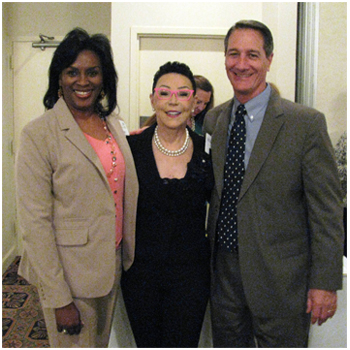HR Solutions Blog
Home Body Language Expert Explains How to Spot a Liar
Toggle nav
Body Language Expert Explains How to Spot a Liar
 No Comments
No Comments
Last week, HR Solutions was privileged to sponsor NOLA SHRM and GBR-SHRM’s first-ever joint chapter meeting. The meeting was dubbed a mini-conference and featured an excellent presentation by Jan Hargrave, body language expert and author of “Let Me See Your Body Talk”, “Freeway of Love”, “Judge the Jury” and “Strictly Business Body Language”.
Hargrave presented attendees with valuable information about the nonverbal communication cues we all give off when interacting with others. Using this information, you can be mindful of how you present yourself to clients, co-workers and even romantic interests. You can also watch others and determine if the information they’re presenting to you is accurate based on their behaviors.
How Important Is Nonverbal Communication?
According to Hargrave, all basic communication is made up of three parts: the words we say, our voice inflection and nonverbal elements. A full 55 percent of our communication is nonverbal, 38 percent is conveyed through voice inflection and only 7 percent is based on the actual words we use to convey our message.
Various hand gestures and body postures can make you appear nervous, confident or even guilty. The way you tilt your head when speaking one-on-one with someone can make you appear either charming and engaged or aloof and distracted.
To Tell the Truth
A large part of Hargrave’s presentation focused on how to tell if someone is lying. This can be useful knowledge in workplace investigations and interviews. Having worked on the jury selection process for several high profile national court cases, Hargrave makes it her business to know when people are lying. The biggest clue? Someone lying will use the left side of their body too much.
A liar will gesture with the left hand, rub the left side of the nose or rub the left eye or left ear, with the left hand. This is because the left side of the body is controlled by the right side of the brain, Hargrave says. This section of the brain is the creative side and allows us to have imagination and make up stories.
Other clues someone is lying include avoiding eye contact, excessive blinking or closing the eyes for longer than is necessary during a conversation. The lying individual’s voice will also get higher because vocal cords become strained during times of stress, and their nostrils will flare slightly.
When people lie, the stories they tell will likely have too many details and be told only in chronological order, Hargrave says. To trip them up, ask them to go through it a second time and throw in a question about the end while they’re still talking about the beginning. If they fabricated and rehearsed the story,giving the details out of order will be difficult.
On the other hand, someone telling the truth is more open. They will show you their hands when they speak, particularly their palms. They will likely stand shoulder width apart to be comfortable and not fidget. If they put their hand on their chest in a “pledge” gesture, this is the ultimate indicator of honesty.
Professional Greetings
Another topic Hargrave focused on was professional greetings and, in particular, the importance of a good handshake. In the ideal handshake, both hands are straight up and down with palms facing one another. No one’s pointer finger is too tense and the shake lasts for three pumps.
In an ideal handshake, hands also touch “web to web” meaning the fleshy areas between the thumbs and forefingers make contact. Shying away from this can come across as too reserved. Any turning from the up and down position is a sign of dominance or submission. A pointer finger extended can also indicate a desire to get the last word and control the interaction.
If you want to really convey to someone you’re present in the conversation, you can try what Hargrave calls “anchoring”, which is placing your left hand on their arm. This has to be done between the wrist and the elbow of the hand they extend to you to shake. If you touch them anywhere else or lean in for a hug, it can be seen as too invasive.
Persuading Others
A gesture Hargrave mentioned frequently can be used to determine someone’s confidence. It’s called “steepling.” You can use this gesture to convey confidence yourself when talking, or you can use it to gauge others’ feelings. If you are trying to convince someone of a new proposal, for example, and they make this gesture, you know they are feeling confident.
Now think back to their gestures immediately before. Were they smiling and nodding and leaning in? Then they are confident about what you were saying and will likely go along with you. Were they holding their arms crossed, looking and their watch or kicking their foot impatiently? Then the steepling is likely a sign they’re confident in telling you “no.”
HR Solutions is a human resources outsourcing firm based in Baton Rouge, Louisiana. We eliminate human resources headaches for businesses with 10 to 1,000 employees by handling their payroll, employee benefits, regulatory compliance and other staffing needs. Contact us to learn how we can streamline your company’s human resources function to save money and reduce risk.
